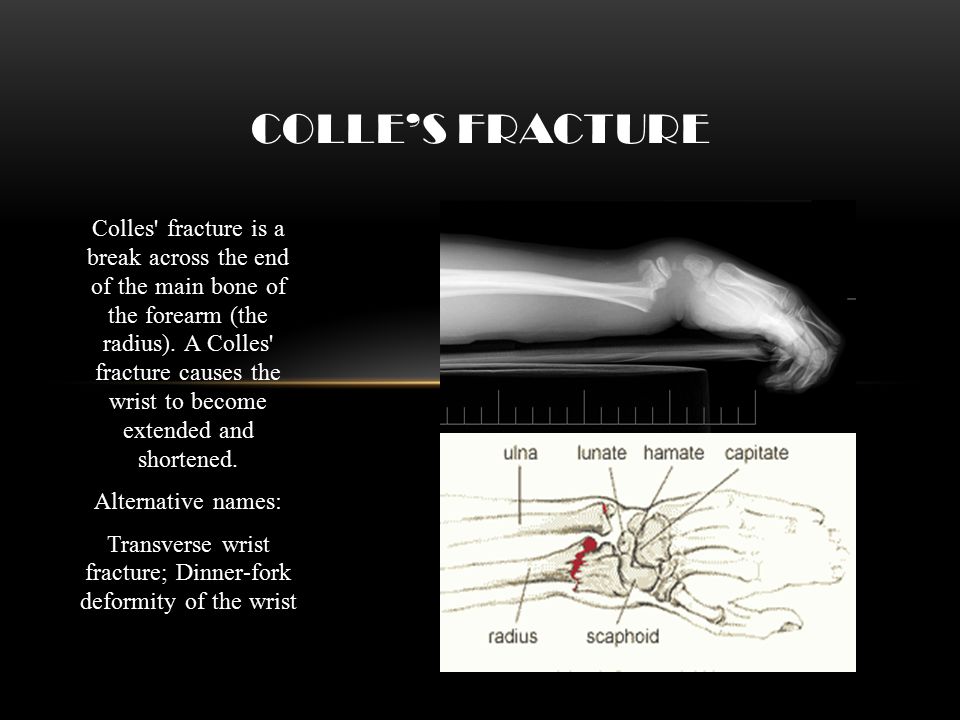

History and etymologyįirst named for Jean-Gaspard-Blaise Goyrand, French physician (1746-1814) 4. More importantly, it also narrows and distorts the entry to the carpal tunnel and can result in carpal tunnel syndrome 1. Malunion, with a residual volar displacement of the distal radius results in a cosmetic deformity, referred to as a garden spade deformity. If the fracture can be reduced but remains unstable, or cannot be reduced then operative fixation ( ORIF) is usually required 1. In most cases, these fractures can be treated with closed reduction and cast application 1.

Treatment depends on the type of fracture, stability and ability to successfully reduce the fracture.
#Colles vs smith fracture mnenomics series#
In most instances, a plain wrist radiographic series will suffice for diagnosis and characterisation. equivalent to a reverse Barton fracture.extra-articular transverse fracture through the distal radius.The fracture can be split into three types, although in practice a description suffices 1,2: Smith fractures usually occur in one of two ways: He would then boil the heads to remove soft tissue and record the results 4,5.Smith fractures account for less than 3% of all fractures of the radius and ulna and have a bimodal distribution: young males (most common) and elderly females 1. Le Fort conducted experiments on 35 cadavers inflicting varying facial trauma by dropping cannon balls and striking them with a bat. They are named after René Le Fort, French surgeon (1869-1951). It should be noted that Le Fort fractures are often associated with other facial fractures, neuromuscular injury and dental avulsions. For example, there may be type 2 on one side and contralateral type 3, or there may be unilateral type 1 and 2 fractures. Le Fort III is a floating face (transverse)Īny combination is possible.Le Fort II is a floating maxilla (pyramidal).Le Fort I is a floating palate (horizontal).unsurprisingly type III fractures have the highest rate of CSF leak.

because of the involvement of the zygomatic arch, there is a risk of the temporalis muscle impingement.transverse fracture line passes through nasofrontal suture, maxillo-frontal suture, orbital wall, and zygomatic arch/ zygomaticofrontal suture.uppermost fracture line can pass through the nasofrontal junction or the frontal process of the maxilla 3.fracture arch passes through the posterior alveolar ridge, lateral walls of maxillary sinuses, inferior orbital rim and nasal bones.pyramidal fracture, with the teeth at the pyramid base, and nasofrontal suture at its apex.fracture line passes through the alveolar ridge, lateral nose and inferior wall of the maxillary sinus.



 0 kommentar(er)
0 kommentar(er)
